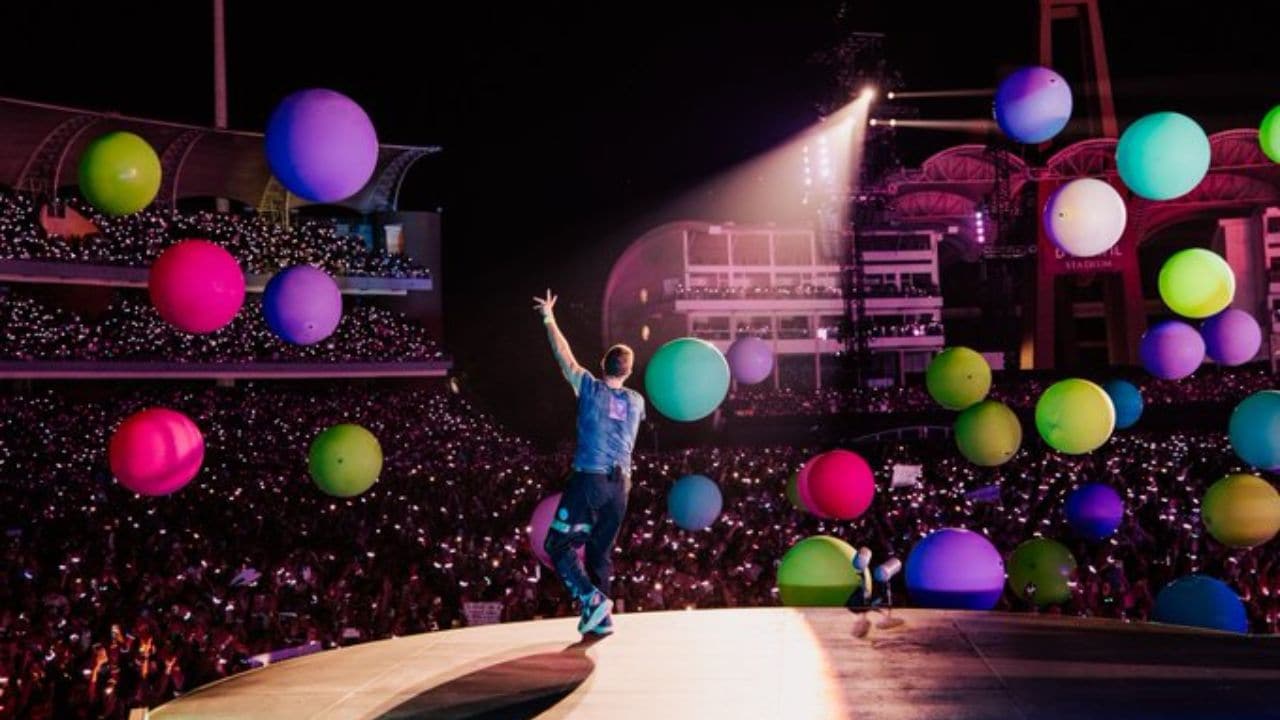India is undergoing a cultural shift, with social media now buzzing not over the latest blockbusters or superstar endorsements, but the electrifying rise of live music concerts. Once relegated to niche audiences, live events are now mainstream spectacles, drawing fervent crowds and shifting the entertainment landscape in unexpected ways.
The country’s music scene is being reshaped by an influx of local and international talent. Homegrown stars like Diljit Dosanjh are gaining massive traction, while global icons across genres — rock, pop, EDM, and more — are seeing unprecedented demand. Over the past two years, music icons like Maroon 5, Green Day, Shawn Mendes, Coldplay, Dua Lipa and Ed Sheeran, have put India on their touring maps.
Coldplay’s recent four-show stint in India serves as a case study in the appeal of live music in India. Over 10 million tickets have already been sold, with industry experts estimating the production costs for a single show at Rs 5-7 crore. This surge in demand, particularly in the wake of the pandemic, has spurred a dramatic rise in ticket prices and corporate sponsorships. According to a report from EY, the Indian live music industry is projected to generate Rs 1,000 crore in revenue by 2025.
Coldplay’s Chris Martin thanks India for forgiving British’s colonial past
Behind the glitz and glamour of these high-profile events lies a carefully orchestrated process. Deepak Choudhary, Founder of EVA Live, outlines five pillars crucial to the success of a concert: artist, target audience, venue, and revenue from sponsorships and ticket sales. “It’s a complex symphony,” Choudhary notes, “but when done right, it strikes a chord with audiences.”
Organizing these large-scale productions is no small feat. Mohit Bijlani, Founder of Team Innovation, breaks down the logistics: securing artist bookings through intricate negotiations, managing technical production for sound and lighting, coordinating venue infrastructure, and ensuring seamless crowd control. Additionally, logistics teams manage transportation, accommodation, and equipment, while security firms safeguard the public. On the business side, sponsorships, insurance, and government permits all contribute to the delicate balance between artistic expression and financial viability.
According to experts, hosting a global artist in Delhi can cost anywhere between Rs12-15 crore, covering all expenses from artist fees to production and logistics. For local artists, the cost typically ranges from Rs 4-5 crore.
For brands, aligning with live music events offers a prime opportunity for engagement, especially in an era where consumer loyalty is harder than ever to achieve. Choudhary explains that while revenue remains a primary concern, the selection of an artist whose image resonates with a brand’s target audience is a key consideration in the marketing strategy.
Live concerts provide an opportunity for direct, tangible engagement with consumers for brands, says Yasin Hamidani, Director of Media Care Brand Solutions.
According to Janvi Mankani – Founder at Mint + Milk, “Brands often achieve a 10-25 percent sales boost, with activations driving results. Sponsorships increase brand recall by up to 80 percent and deliver a 3-5x ROI through social media impressions and user generated content”.
Traditional companies have long relied on sponsorships and advertising, aiming for broad reach. But today’s startups are taking a more dynamic approach, using concerts as platforms for innovation. These companies leverage data analytics, influencer marketing, and immersive experiences like augmented reality to connect with younger, tech-savvy audiences. Bijlani highlights how startups are using these events as “living laboratories,” testing new products and gathering real-time feedback. According to experts, brands are ready to pay a premium of between 40 and 70 percent in sponsorships to be a part of concerts like Coldplay.
Coldplay Concert: Bombay HC urges Govt to address ticket sales malpractice
Arijit Singh’s 2024 concert series, for example, saw an average attendance of 25,000 per show, generating upwards of Rs6 crore per event. In contrast, Divine’s multi-city tour attracted audiences of 15,000-18,000, yielding a more modest Rs3-4 crore per show. As Bijlani points out, “The location of the event can significantly impact its cost. Tier-1 cities like Delhi or Mumbai come with higher infrastructure and regulatory expenses, while smaller cities present unique logistical challenges but may offer lower overheads.”
Shillong, long known for its rich musical heritage, has emerged as an unlikely hotspot for major international acts. In 2024, both Bryan Adams and the pop band Blue performed in the city, drawing in an enthusiastic crowd from across the northeast. Local culture plays a role in the city’s musical prominence, with government backing and a vibrant youth demographic eager to embrace live performances. “During Bryan Adams’ concert, the entire city declared a holiday to celebrate,” recalls Choudhary. “Shillong is becoming a key destination for international artists.”
The live music sector, once the province of diehard music fans, has become a key player in India’s entertainment and brand-building ecosystem. As ticket sales soar and sponsorships grow more lucrative, it’s clear that India is tuning into a new era of concert culture.
